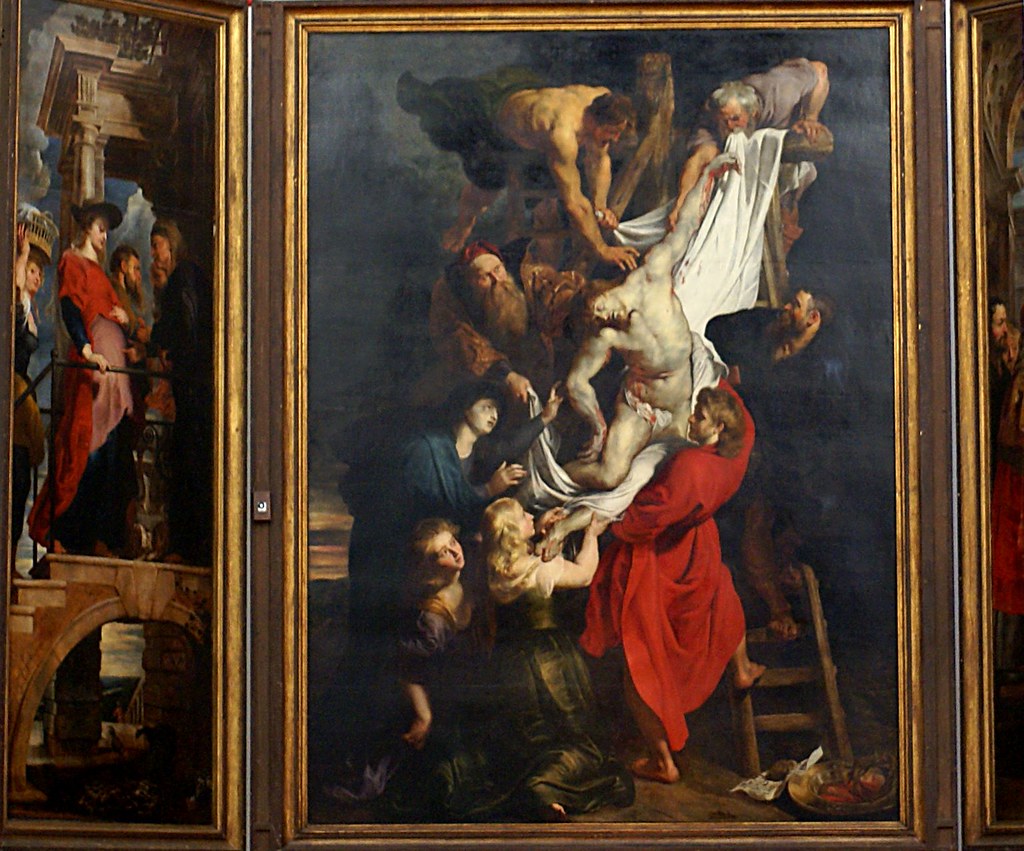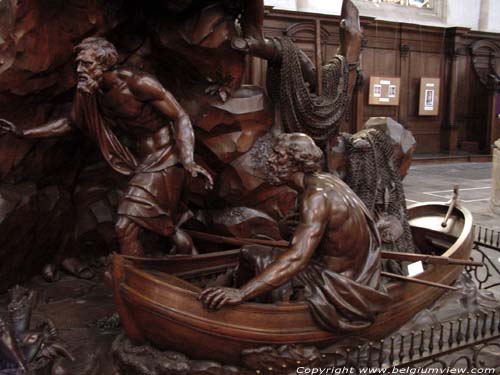Our historical churches
 Although a number of historical churches have vanished (e.g. the Walburgischurch in the very center of the old town, and the church belonging to the St-Michael’s cloister in the environment of the Kloosterstraat), we still have 5 churches with a rich historical background.
Although a number of historical churches have vanished (e.g. the Walburgischurch in the very center of the old town, and the church belonging to the St-Michael’s cloister in the environment of the Kloosterstraat), we still have 5 churches with a rich historical background.
The most important of these of course is the Cathedral, Our Lady’s Church, situated between the Town Hall and the Groenplaats, which by the way used to be a cemetery belonging to the church. This gothic masterpiece is especially known for its 4 Rubens paintings. While restauration works are on their way in the Fine Arts Museum, part of the collection, which originally belonged to the cathedral, are on display again. So the cathedral is an interesting museum of its own.
 The youngest of the historical churches is the Jesuits’ church: St-Carl-Borromeus. Its façade is a fine example of baroque art, but only inside will you be able to feel the effect of baroque completely, especially when you enter the Houtappel chapel (to your right facing the main altar). Also this church is closely connected with Rubens as there are clear signs that Rubens had a hand in the design of both the façade and the tower. Originally the aisles left and right had their ceilings painted by Rubens, but a fire in 1718 destroyed all of these paintings. Rubens also painted two large canvases for the main altar, but the originals are now on display in Vienna. The really unique thing about this church is that the painting adorning the main altar can be switched. The original device to perform this feat is still active and is being used four times a year.
The youngest of the historical churches is the Jesuits’ church: St-Carl-Borromeus. Its façade is a fine example of baroque art, but only inside will you be able to feel the effect of baroque completely, especially when you enter the Houtappel chapel (to your right facing the main altar). Also this church is closely connected with Rubens as there are clear signs that Rubens had a hand in the design of both the façade and the tower. Originally the aisles left and right had their ceilings painted by Rubens, but a fire in 1718 destroyed all of these paintings. Rubens also painted two large canvases for the main altar, but the originals are now on display in Vienna. The really unique thing about this church is that the painting adorning the main altar can be switched. The original device to perform this feat is still active and is being used four times a year.
 Another church linked with Rubens is St-James’s, located near St-Jacobsmarkt, entrance via the southern aisle in Lange Nieuwstraat. Here the master is buried beneath a painting of his own choice. This church boasts a very impressive main altar in baroque style and an organ on which the young Mozart one gave a concert as he passed Antwerp in the company of his father and his sister.
Another church linked with Rubens is St-James’s, located near St-Jacobsmarkt, entrance via the southern aisle in Lange Nieuwstraat. Here the master is buried beneath a painting of his own choice. This church boasts a very impressive main altar in baroque style and an organ on which the young Mozart one gave a concert as he passed Antwerp in the company of his father and his sister.
At the Veemarkt (Cattle Market) you can find the entrance to St-Paul’s, which used to be the church of the dominicans as you can clearly see from the engravings above the entrance. In the church you will find paintings of all the great masters (Rubens, Van Dijck, Jordaens, …) but equally impressive is the calvary you will find in a courtyard belonging to the church.
 Last but not least there’s St-Andrew’s (entrance Waaistraat) which boasts what is probably the most fascinating pulpit in the world.
Last but not least there’s St-Andrew’s (entrance Waaistraat) which boasts what is probably the most fascinating pulpit in the world.

